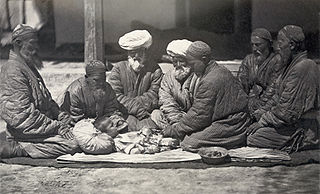 W
WChildren often acquire religious views approximating those of their parents, although they may also be influenced by others they communicate with - such as peers and teachers. Matters relating the subject of children and religion may include rites of passage, education, and child psychology, as well as discussion of the moral issue of the religious education of children.
 W
WCircumcision is the removal of the foreskin from the human penis. In the most common procedure, the foreskin is opened, adhesions are removed, and the foreskin is separated from the glans. After that, a circumcision device may be placed, and then the foreskin is cut off. Topical or locally injected anesthesia is generally used to reduce pain and physiologic stress. The procedure is most often an elective surgery performed on babies and children for religious or cultural reasons. Medically, circumcision is a treatment option for problematic cases of phimosis and balanoposthitis that do not resolve with other treatments, and for chronic urinary tract infections (UTIs). It is contraindicated in cases of certain genital structure abnormalities or poor general health.
 W
WThe Columna Lactaria was a landmark in ancient Rome in the Forum Holitorium, or produce market. The Roman grammarian Festus says it was so called "because they would bring babies there to be fed with milk." It seems to have been a public charity where poor parents could obtain milk for their infants, or a central site for locating and hiring wet nurses. It has also been interpreted as a sanctioned site of child abandonment, where parents unable or unwilling to care for newborns could leave the child in the hope that it might be pitied and fostered.
 W
WThe French law on secularity and conspicuous religious symbols in schools bans wearing conspicuous religious symbols in French public primary and secondary schools. The law is an amendment to the French Code of Education that expands principles founded in existing French law, especially the constitutional requirement of laïcité: the separation of state and religious activities.
 W
WIn ancient Roman religion, birth and childhood deities were thought to care for every aspect of conception, pregnancy, childbirth, and child development. Some major deities of Roman religion had a specialized function they contributed to this sphere of human life, while other deities are known only by the name with which they were invoked to promote or avert a particular action. Several of these slight "divinities of the moment" are mentioned in surviving texts only by Christian polemicists.
 W
WThere is a widespread view among practitioners of female genital mutilation (FGM) that it is a religious requirement, although prevalence rates often vary according to geography and ethnic group. There is an ongoing debate about the extent to which the practice's continuation is influenced by custom, social pressure, lack of health-care information, and the position of women in society. The procedures confer no benefits and can lead to serious health problems.
 W
WChild saints are children who died or were martyred and have been declared saints or martyrs of the Roman Catholic, Eastern Orthodox, Coptic Orthodox, Anglican, Episcopalian, or Lutheran Churches or have been beatified or